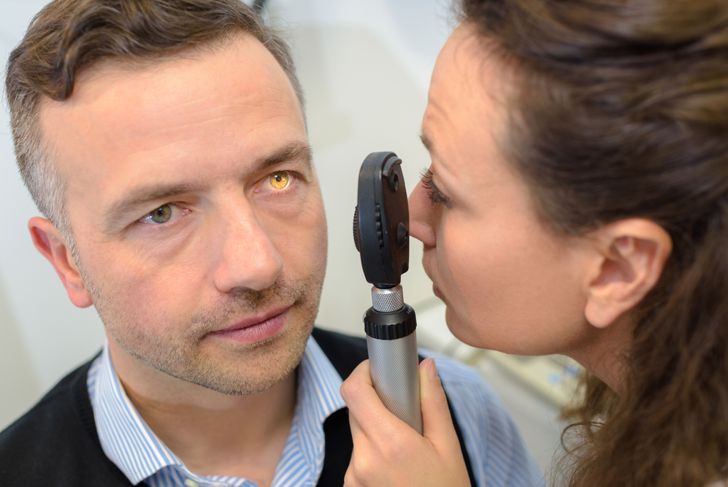Optic neuritis refers to an inflammation of the optic nerve, which can occur due to damage or loss of the protective layer that coats the nerve. As a result, the patient’s vision becomes compromised, and visual perception may change. The patient may notice blind spots and worsened color vision. Pain is often present but improves with rest. If the condition doesn’t go away after some time, ophthalmologists may prescribe certain medications. Find out the top 10 symptoms of optic neuritis.
Vision Loss
While this symptom may sound alarming, in most cases it is mild and non-permanent. In rare cases, vision loss, which is most likely to affect young adults, can become permanent. Fortunately, it usually only affects one eye. To examine for vision loss, a specialist will measure changes in your vision. The usual result is reduced visual acuity as well as changes in peripheral vision. The perception of brightness is also likely to become affected. As a result, a loss of color vision may occur. Optic neuritis usually resolves by itself in due time.
Pain Around the Eye
One of the most common symptoms of optic neuritis is a pain that occurs around the eye. Because the eye is one of the most fragile parts of the body, many different variables can cause pain to occur, including superficial damages. In optical neuritis patients, up to one-third of all cases are characterized by visible swelling, sometimes including swelling of the blood vessels around the nerve, a condition known as papillitis. Alternatively, inflammation can occur behind the eyes, which may be harder to diagnose. In any case, movement or exercise may make the pain worse.
Inability to Distinguish Colors
In some cases, patients with optic neuritis also show signs of dyschromatopsia, or the inability to see colors correctly. Some people cannot distinguish certain colors, while others will lose sharpness in their vision. In most cases, patients start developing symptoms over the course of a couple of hours and up to a few days or weeks. Changes to vision may be temporary, but in some cases, they may be permanent.
Photopsia
You may experience a symptom known as photopsia, which refers to the presence of flashes of light in the field of vision. Many different conditions, including migraines and occipital lobe infarction, may cause photopsia. When optic neuritis is to blame, the patient may see flashes of light in one or both eyes, depending on the extent of the condition. To make a correct diagnosis of optic neuritis, different variables are taken into account, including patient history and different examinations. Sometimes blood tests are used to make a diagnosis, and an MRI may be useful.
Perception of Light
Because optic neuritis affects the nerves of the eye, you may experience changes in your vision. One of the most common ways in which vision is affected is the perception of light and how the pupil reacts to it. In most cases, optic neuritis affects young adults in one eye.
Uhthoff’s Phenomenon
If you develop optic neuritis, you may experience Uhthoff’s phenomenon, in which vision becomes worse with increased body temperature. Heat can affect the nerves and how they transmit information across the body. Different activities, such as going to the sauna, may increase body temperature and make your symptoms worse. Avoid activities such as exercise and hot showers, as well as any others that your doctor prohibits.
Blurry Vision
Optic neuritis can affect the eyes and vision in many different ways, causing people to experience small areas of blurred vision. In extreme cases, there may be complete blindness. Blurry vision usually occurs within a few days after the appearance of the condition. While optic neuritis does tend to get better by itself, sometimes medical attention may be necessary. You may also experience other symptoms, such as pain that gets worse with movement and a general decrease in vividness.
Loss of Contrast
Changes in vision due to optic neuritis can include a loss of contrast and an inability to distinguish between different colors. If you are diagnosed with optic neuritis, your treatment plan should take into account permanent deficits in color vision, contrast, and brightness. In most cases, this condition resolves on its own.
Less Vivid Vision
Unfortunately, for some patients with optic neuritis, seeing less vividly is a reality that many have to face. Instead, the vision may become blurrier and less colorful, vibrant and clear due to the damage caused by the condition. Fortunately, several medications are available to reduce pain, improve vision and reduce inflammation of the nerve. If a patient becomes hospitalized, IV steroids may be given, which may slightly increase the speed of recovery.
Pain in the Eye
Patients who develop optic neuritis may complain of dull pain in the eye. Some individuals report feeling more pain during times of movement or physical activity, and over time, the pain can become more severe. Usually, the pain is felt in different parts of the eye, although sometimes it occurs in only one area.

 Home
Home Health
Health Diet & Nutrition
Diet & Nutrition Living Well
Living Well More
More




















